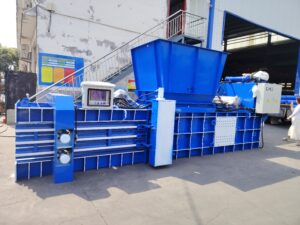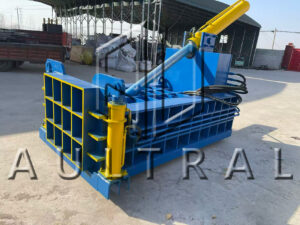Top Features to Look for in Modern Horizontal Metal Balers
Introduction
In today’s competitive recycling industry, efficiency and productivity are more important than ever. A Horizontal Metal Baler is a key piece of scrap metal recycling equipment designed to compress loose metal into dense, manageable bales. Choosing the right baler can save time, reduce labor costs, and maximize ROI. But with so many models available, how do you know which features matter most?
This guide highlights the top features to look for in modern horizontal metal balers, ensuring you make a smart investment for your recycling business.
1. Heavy-Duty Hydraulic System

A reliable hydraulic baler system is the heart of any horizontal baler. Look for:
-
High-pressure cylinders that deliver strong and consistent compaction.
-
Energy-efficient pumps that reduce operating costs.
-
Durable seals and components to prevent leaks and ensure long service life.
A robust hydraulic system guarantees stable performance, even under heavy workloads.
2. Automatic Feeding System
Modern horizontal balers often come with conveyor-fed systems that allow continuous feeding of scrap metal. This feature is crucial for high-volume operations because it:
-
Minimizes manual labor.
-
Increases processing speed.
-
Ensures smoother workflow in recycling plants.
If you’re dealing with large loads of steel, aluminum, or copper scrap, an automatic feeding system is a must-have.
3. High Compression Force
The ability to produce high-density bales is one of the most critical factors. A powerful compression chamber ensures:
-
More uniform bale sizes.
-
Reduced transportation costs.
-
Maximized storage efficiency.
When comparing balers, check the tonnage rating to match your production requirements.
4. Advanced Control Panel & Automation

Modern balers feature PLC control systems with touch-screen interfaces. These provide:
-
Easy operation with preset modes.
-
Real-time monitoring of pressure and cycle times.
-
Error diagnostics to reduce downtime.
Automation not only boosts efficiency but also improves safety in the workplace.
5. Durable Wear-Resistant Materials
Because balers handle abrasive scrap, the build quality matters. Look for:
-
High-strength alloy steel in wear areas.
-
Replaceable wear plates for easy maintenance.
-
Reinforced welding structures for durability.
This ensures the machine withstands continuous heavy-duty use without frequent breakdowns.
6. Safety Features & Compliance
Operator safety is essential. The best horizontal balers include:
-
Emergency stop buttons.
-
Safety interlocks on doors and hoppers.
-
Compliance with CE/ISO safety standards.
These features protect workers while maintaining productivity.
7. Energy Efficiency & Eco-Friendly Design
With rising energy costs, eco-friendly balers are becoming a priority. Look for machines with:
-
Smart power-saving modes.
-
Variable speed pumps.
-
Low-noise, low-emission design.
This not only reduces your carbon footprint but also cuts long-term operating expenses.
8. Versatility in Scrap Types
A modern baler should handle a wide variety of metals, including:
-
Steel and stainless steel.
-
Copper and aluminum.
-
Mixed light scrap and sheet metal.
Some models even allow bale size customization, making them adaptable to diverse recycling needs.
Conclusion
A modern horizontal metal baler is more than just a machine—it’s a long-term investment in your recycling operation. By prioritizing features like a powerful hydraulic system, automatic feeding, advanced automation, high compression force, and safety compliance, you ensure maximum efficiency, reliability, and profitability.
Whether you’re running a large recycling facility, a steel mill, or a scrap processing plant, the right baler will save costs, improve workflow, and support sustainable metal recycling.
